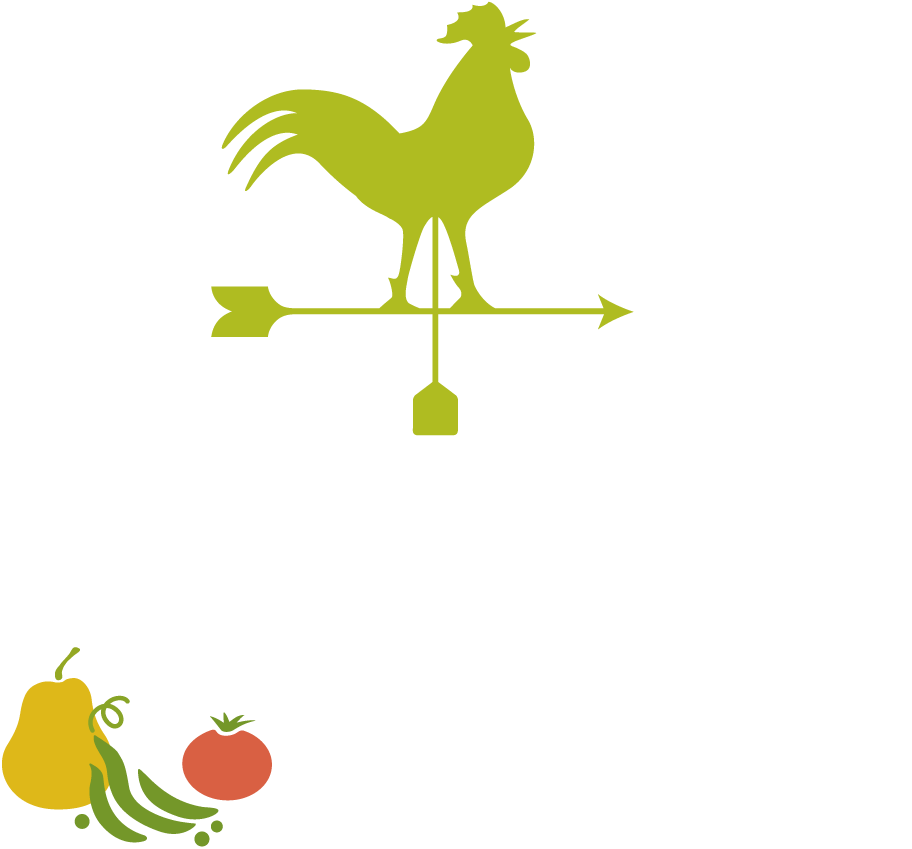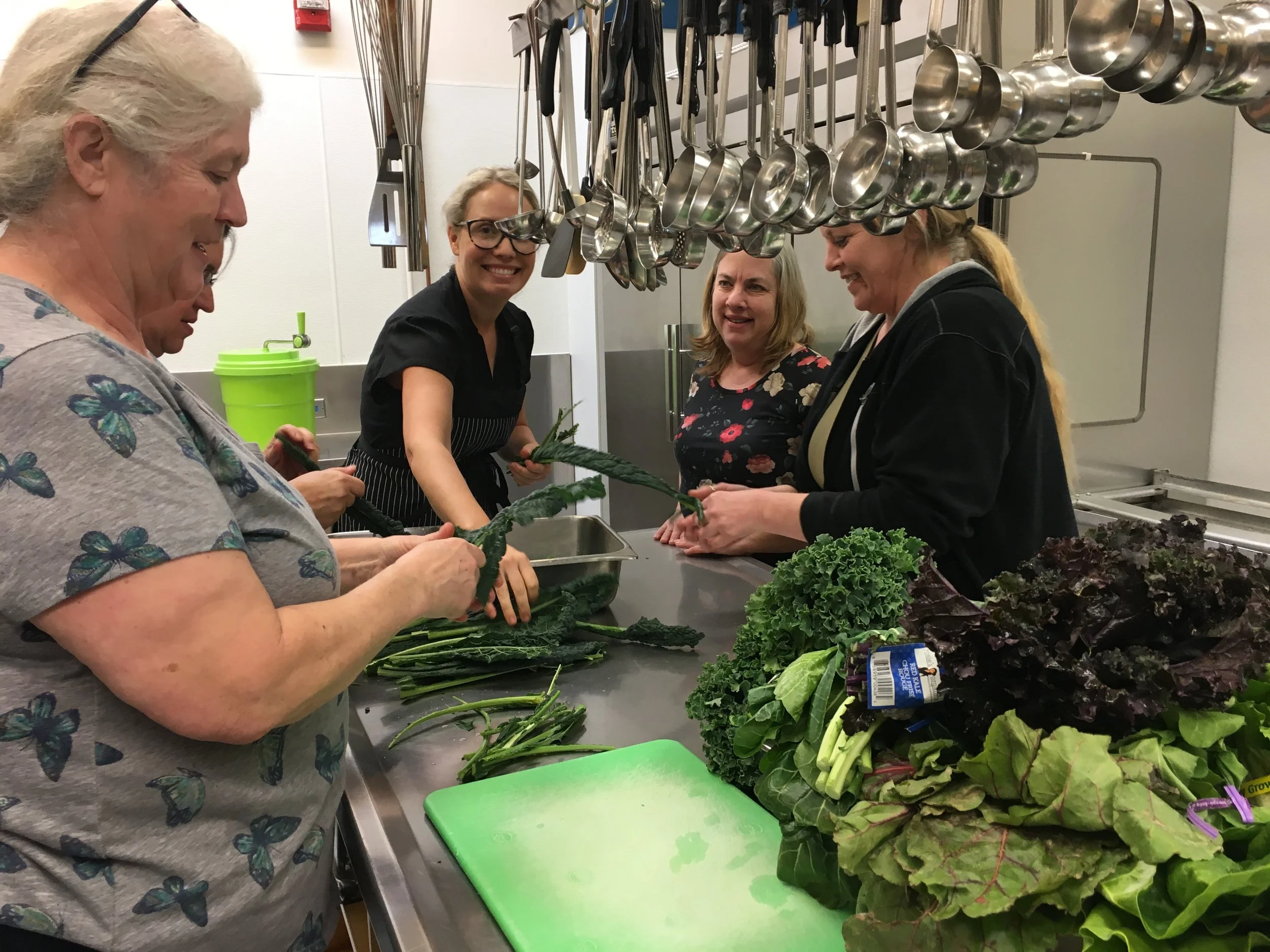As the southern Oregon Procurement Hub for the Oregon Farm to School and School Garden Network, Rogue Valley Farm to School works with school food service staff, farmers, distributors, and state and federal agencies alike to find creative solutions to increasing local food being served in school meals.
This January, our board member extraordinaire, Elishia Tucker, and RVF2S Program Director Melina Barker, facilitated a professional development workshop in the Ashland School District, focused on scratch-cooking delicious school meals. The starring ingredients: leafy greens.
Rogue Valley Farm to School recently facilitated a workshop on cooking with leafy greens. Who attended?
M: We invited the kitchen managers from each school in the Ashland School District, as well as the Nutrition Services Director, Christina Lehman.
What inspired RVF2S to lead this workshop?
M: The idea grew during our conversations with Christina following the Ashland School District’s Local Lunch day in October. We had supported the District in procuring local ingredients for the event - particularly leafy greens - and realized that the Food Services staff had interest in professional development opportunities that focused on incorporating locally-sourced ingredients into school meals. A workshop felt like the next step in supporting the District’s use of local, whole foods in their kitchens.
Why did you focus on leafy greens?
M: If a school is going to be successful in featuring local foods on the lunch line, it felt important to focus first on foods that are abundantly available throughout the school year. In the Rogue Valley, leafy greens and hearty greens are both versatile and readily available year-round.
What were the goals of the workshop?
E: Our goal was to share fast and easy ways to wash, prepare, and cook leafy greens. We focused on collard greens, lacinato kale (dinosaur kale), curly kale, swiss chard, beet greens, bok choy + tatsoi, arugula, spinach, and escarole.
Throughout the workshop, we discussed processing techniques for each type of green, both raw and cooked, as well as flavor profiles for each ingredient. This inspired a lot of discussion on menu planning and even ideas on incorporating greens into upcoming menu items. During our time together, we prepared two recipes for raw kale salad, as well as two approaches to sauteed greens, including steam-sauteed collard greens, and blanched-then-sauteed bok choy!
What was your favorite part about this workshop?
M: It was so exciting to see the peer-to-peer learning that took place! Kitchen managers shared their own knowledge of working with ingredients like kale and really learned from one another, as well as from Elishia. There was a lot of knowledge in the room!
Were there any concerns expressed?
E: Staff shared that their main concerns in the kitchen are having enough prep time to cook with greens; and having ingredients like balsamic vinegar, olive oil, and salt on hand to make these dishes taste great.
It also surfaced that their main concern about feeding the kids these new, healthy foods is actually time - and role models! Students only have about 20 minutes to collect their food, eat it, and return their lunch tray. Introducing new foods, especially foods that might take too much chewing, is tricky when lunchtime is so limited.
How can we remedy this?
M: School food has regulations when it comes to salt and fat, so it’s not uncommon for schools to shy away from ingredients like olive oil and salt. It’s less known, however, that these dietary regulations are based on an entire school week. Since salt and fat content tend to be higher amongst bulk-ordered processed foods, schools meet their threshold for these elements much faster when utilizing processed food on their menus. By reducing the amount of processed food being served, kitchen managers are freed up to use salt and healthy fats like olive oil in scratch cooking!
E: Kitchen managers strongly believe that volunteers can play a valuable role in supporting the inclusion of local foods in school meals: from supporting kitchen staff in washing and processing raw ingredients, to acting as a cheerleader in the cafeteria for new vegetables being served and encouraging students to try certain menu items.
It’s also important for families to know that their kids are going to get exposed to these foods and do their part to encourage trying new things on the salad bar and on the lunch line.
Is there anything else you want to share about the workshop?
E: The Food Service staff are all savvy cooks and kind people, they deserve some extra appreciation for the work they’re already doing!
M: The Ashland School District is at a five year high for participation in school meals - but, we still have a long way to go in order to make the meals program more financially viable. If you’re interested in getting involved, sign up to volunteer today!
----
You can browse the cookbook featured during the Leafy Greens workshop here, courtesy of Fresh From Vermont.



